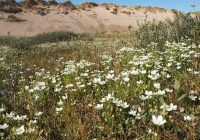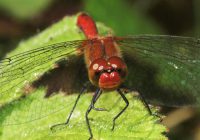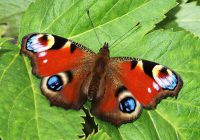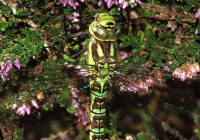Dr Phil Smith’s Wildlife Notes
August 2012
Each summer I usually conduct a detailed survey of at least one uncommon coastal plant. This year, the chosen target was the rather unprepossessing Saltmarsh Flat-sedge (Blysmus rufus). Having a mainly northern British distribution, it was thought to have become extinct in South Lancashire in the early 1980s when a small colony near Southport disappeared under a carpark. However, the growth of Birkdale Green Beach soon produced suitable habitat, so I started to look for it there. Frustratingly, there were no sightings until 2006, when Botanical Society of the British Isles members found a patch on the Green Beach. After that, I saw it regularly. A thorough search this summer located 29 patches covering 680 square metres, the plant’s dark blue-green tone making it easier to find than you might expect. Saltmarsh Flat-sedge is typically associated with damp depressions in upper salt-marshes and sometimes occurs in dune-slacks. I also found it on lightly used Green Beach footpaths where trampling keeps the vegetation open.
Despite rather inclement weather, a guided walk on 19th for Sefton Leisure Services attracted about 28 enthusiasts to visit the famous Devil’s Hole. This is the enormous blow-out in the Ravenmeols Sandhills that is not only visually spectacular but also superb for wildlife. The main basin has become a young dune-slack with a rich flora, the pride of which is Grass-off-Parnassus. This year it has appeared in unprecedented abundance, covering the damp ground with thousands of large starry-white flowers. The Sefton Coast is a national hotspot for this species which is declining in most of England. Although there are other sizeable colonies in the dunes, I haven’t seen anything like this for a long time. It could even be the largest population in the country!
Every now and again one of my trips really sticks in the memory. An example was a visit to the Green Beach on 20th. My arrival at Ainsdale coincided with a high tide that had pushed a roost of 3500 Sanderlings up the shore. This was one of the largest gatherings of that species I had ever seen. With them were about 2500 Dunlins and 150 Ringed Plovers. I managed to persuade two groups of dog-walkers not to disturb the waders. As the Sanderlings had just arrived back from northern Canada and Greenland, they deserved a rest. The nearby embryo dunes were alive with Northern Dune Tiger , Beetles, while the inner edge of the “New Green Beach” had swathes of flowering Grass-of-Parnassus. Several baby Natterjack Toads were running about on the footpath, while the adjacent slack, flooded almost to winter levels, had Short-winged Coneheads, vying for attention with numerous Graylings, Common Blues, Peacocks, Six-spot Burnets, etc. Finally, I reached the main target of my visit, the frontal dune-slack no. 47. Its four scrapes were re-profiled back in March to make them more attractive to pond plants and animals. It certainly seems to have done the trick, as I found seven species of dragonflies, including eight Ruddy Darters, 30 Emerald Damselflies, two Emperors and single Brown Hawker and Southern Hawker.
After the wettest summer for 100 years, sunnier conditions towards the end of August caused duneland butterflies to emerge in large numbers. Peacocks were especially numerous and were joined by the equally colourful Small Tortoishell. Once a common sight, the latter species has been hard to find in recent years, so it was a delight to see 30-40 nectaring on Water Mint and Common Fleabane on the northern section of the Green Beach.
A visit to Freshfield Dune Heath on 29th was enlivened by a female Southern Hawker basking in a sheltered spot on flowering Heather, while the month ended with a big hatch of Migrant Hawkers. I counted 16 flying around the Natural England offices at Ainsdale on 30th, while others posed for photographs on the Green Beach Alder bushes.




